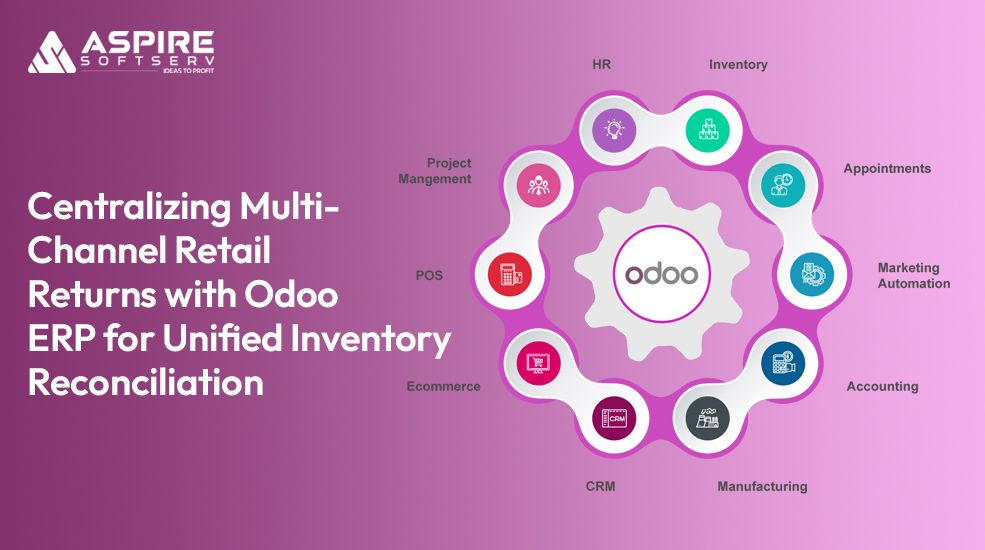
Introduction
Odoo development, an all-in-one business management software suite, provides various applications to streamline and automate business processes. However, as your business grows and your data increases, you might encounter performance issues that can impact user experience and productivity.
This blog will explore key strategies to optimize Odoo's performance, improving its speed and efficiency.
Database Optimization
The database is at the heart of any Odoo installation. To optimize performance, consider the following:
a. Indexing:
Analyze your database usage and create indexes on frequently queried fields. Indexing allows the database to locate and retrieve data, reducing query execution time quickly.
b. Archiving:
Archive or delete outdated and unnecessary data to keep the database size manageable. You can use Odoo's archiving features or schedule regular data cleanup tasks.
c. Database Maintenance:
Regularly run maintenance tasks such as vacuuming and analyzing to optimize the database structure and update statistics.
Server Configuration
Optimizing the server configuration can significantly impact Odoo's performance. Here are a few aspects to consider:
a. Hardware:
Ensure your server hardware meets the recommended specifications for running Odoo. Sufficient RAM, CPU power, and storage can prevent resource bottlenecks.
b. Web Server Setup:
Configure your web server (e.g., Nginx, Apache) to handle incoming requests efficiently. Enable caching mechanisms, compress responses, and tune server parameters based on your server's capacity and traffic.
c. Odoo Configuration:
Adjust Odoo's configuration parameters to match your server's capabilities. Optimize settings such as the number of worker processes, limit memory usage, and enable server-side caching where appropriate.
Code and Module Optimization
Fine-tuning your custom code and Odoo modules can contribute to improved performance:
a. Profile and Identify Bottlenecks:
Use Odoo's built-in profiling tools or external profiling software to identify code sections or modules causing performance issues. This will help you focus on optimizing the critical parts.
b. Efficient Querying:
Avoid excessive database queries and optimize existing ones. Use Odoo's ORM (Object-Relational Mapping) methods like search(), read(), and browse() wisely, ensuring that you fetch only the necessary data.
c. Data Processing:
Optimize data processing operations, such as calculations and computations. Minimize unnecessary iterations, utilize efficient algorithms, and leverage database-level measures whenever possible.
Image and Attachment Handling
Odoo allows the storage of images and attachments within its database. However, managing large attachments and ideas directly in the database can impact performance.
Consider the following:
a. Offloading:
Store large attachments and images outside the database using Odoo's file storage capabilities. Utilize external storage solutions like Amazon S3 or a dedicated file server, and configure Odoo to point to these locations.
b. Image Optimization:
Optimize image sizes and formats to reduce file sizes without compromising quality. Use tools like lossless compression and resize images to appropriate dimensions, improving page load times.
Read More: Best Practices for Optimizing Performance with Odoo
Caching and Load Balancing
Caching and load balancing mechanisms can significantly enhance Odoo's performance:
a. Browser Caching:
Leverage browser caching techniques by setting appropriate HTTP headers. This allows clients to cache static resources, reducing subsequent requests to the server.
b. Server-Side Caching:
Enable server-side caching mechanisms within Odoo, such as Redis or Memcached. Caching frequently accessed data or rendered views can dramatically improve response times.
c. Load Balancing:
For high-traffic Odoo deployments, consider implementing load balancing across multiple server instances. Distributing the load evenly improves response times and prevents single points of failure.
Conclusion
In today's competitive business landscape, maximizing the performance and efficiency of your Odoo system is crucial for staying ahead of the game. As an Odoo development company, we understand the importance of a well-optimized system that delivers lightning-fast results. Regularly monitor and fine-tune your setup to adapt to changing business needs and data volumes, ensuring a smooth and productive user experience.
As a dedicated Odoo development company, we deeply comprehend the profound impact that a well-optimized system can have on your overall business performance. Our commitment extends beyond mere understanding; it encompasses the delivery of solutions that are not just efficient but also agile, adapting seamlessly to the dynamic demands of your industry.
The journey towards a high-performing Odoo ecosystem doesn't end with implementation; it's an ongoing process. We advocate for a proactive approach—regularly monitoring and fine-tuning your setup. This adaptability is crucial in navigating the ever-evolving landscape of business needs and surges in data volumes. By doing so, you not only ensure a consistently smooth and productive user experience but also position your business to leverage the full potential of Odoo's capabilities.
In essence, our philosophy goes beyond being a service provider; we strive to be your strategic partner in the journey towards operational excellence. Trust us to empower your business with a well-optimized Odoo system that not only meets the current demands but is also primed to evolve with your business, ensuring sustained success in the competitive market.
For expert Odoo development services and tailored Odoo ERP customization, contact us today.
Reach out to us at [email protected] to elevate your business processes with our cutting-edge solutions.



